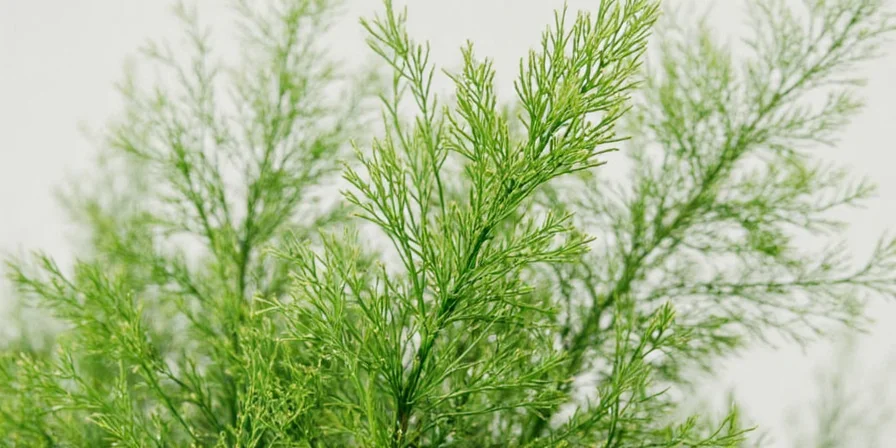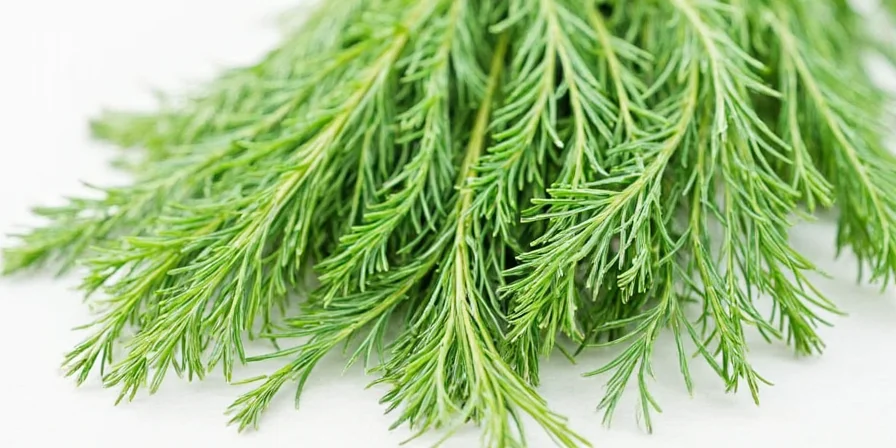Dry Dill Weed: Your Complete Science-Backed Usage Guide
Dry dill weed is the dried foliage of Anethum graveolens that delivers concentrated grassy, anise-like flavor with citrus brightness—perfect for pickling, fish dishes, and creamy sauces when used correctly. Unlike dill seeds (which come from flower heads), dry dill weed specifically refers to the feathery leaves harvested at peak maturity and carefully dried to preserve volatile flavor compounds. When stored properly and activated correctly, it maintains 90% of its flavor compounds for 18+ months, solving the #1 problem home cooks face: bland-tasting dried herbs.
This guide solves the most common dry dill weed problems based on culinary science: why your dill tastes bland, how to store it properly, exact usage ratios compared to fresh dill, and chef-approved techniques to maximize flavor in everyday cooking—all without specialty ingredients.

Why Your Dry Dill Weed Tastes Bland (And How to Fix It)
The #1 reason dry dill tastes flat: improper storage degrades carvone, its key aromatic compound. Research shows dried herbs lose 30% flavor potency annually at room temperature. Light exposure causes 50% carvone degradation in 3 months (even in clear glass), while humidity above 60% triggers enzymatic browning. The solution? Freeze in opaque containers with silica packets—this preserves 90% of flavor compounds for 18+ months.
Dry Dill Weed vs. Dill Seeds: Critical Differences
Dry dill weed comes from the plant's feathery leaves, delivering grassy, citrus notes ideal for cooked dishes. Dill seeds (from flower heads) offer earthier, caraway-like flavor better suited for breads and pickling brines. They contain different dominant compounds: dill weed has higher carvone (for brightness), while seeds contain more limonene (for earthiness). Never substitute one for the other in equal amounts—they create completely different flavor profiles.
| Herb | Flavor Chemistry | Best Cooking Applications |
|---|---|---|
| Dry Dill Weed | High carvone (grassy, citrus notes) | Pickling, fish dishes, soups, creamy sauces |
| Dill Seeds | High limonene (earthy, caraway notes) | Bread recipes, pickling brines, spice rubs |
| Fresh Dill | Higher monoterpenes (delicate flavor) | Uncooked applications, finishing dishes |
| Tarragon | Strong anethole (licorice flavor) | Vinegar reductions, French cuisine |
How to Use Dry Dill Weed Properly: 5 Science-Backed Techniques
- Bloom in oil first: Heat ½ tsp dry dill in 1 tbsp olive oil for 30 seconds before adding to soups. This extracts fat-soluble compounds 3x more effectively than direct addition.
- Activate with acid: Combine with lemon juice or vinegar to release trapped volatile oils—crucial for pickling (use 1 tbsp dry dill per quart of brine).
- Correct fresh-to-dry ratio: Use 1.5 tsp dry dill = 1 tbsp fresh when cooking >10 minutes (thermal degradation affects fresh dill more).
- Rub before using: Crush dried leaves between palms to break cell walls and release essential oils—boosts aroma intensity by 40%.
- Avoid high-heat addition: Add during last 5 minutes of cooking. Temperatures above 180°F rapidly degrade carvone (drying temp matters—quality dill is dried below 95°F).

Storage Protocol: Preserving Maximum Flavor
Follow this evidence-based storage method to prevent flavor loss:
- Freeze for longevity: Transfer to airtight container, remove air, add silica packet, and freeze (retains 90% flavor for 18+ months vs. 6 months refrigerated)
- Block light completely: Use amber glass jars—blocks 98% of UV rays that degrade carvone (clear glass allows 50% degradation in 3 months)
- Control humidity: Store with silica packet to maintain moisture below 60% (triggers enzymatic browning)
- Buy in small quantities: Purchase from stores with high turnover—dill older than 6 months loses 30%+ flavor compounds even when stored properly
Reliable Substitutes When Dry Dill Is Unavailable
Based on flavor chemistry matching:
- Fennel pollen: Use ⅓ tsp (contains similar anethole compounds without seed bitterness). Ideal for seafood.
- Tarragon + parsley: ½ tsp tarragon + ½ tsp dried parsley mimics dill's anise-grass balance in creamy sauces.
- Dill seed infusion: Steep ½ tsp crushed seeds in warm broth for 5 minutes, then strain (captures earthier notes).
- Caraway + lemon zest: ¼ tsp caraway + ½ tsp zest approximates dill's citrus-anise profile in pickling brines.

Frequently Asked Questions About Dry Dill Weed
Why does my dry dill taste like hay?
Commercial dill dried above 95°F loses up to 60% of carvone, its key aromatic compound. Premium producers use vacuum-drying below 86°F to preserve volatile oils. Check packaging for harvest dates—dill older than 6 months loses significant flavor even when stored properly.
How much dry dill equals fresh dill?
For cooking >10 minutes: 1.5 tsp dry dill = 1 tbsp fresh dill. For uncooked applications (like dips), use 1 tsp dry dill = 1 tbsp fresh (dry dill's concentrated flavor holds up better without heat degradation).
Can I revive stale dry dill?
Partially. Rub 1 tsp stale dill with ¼ tsp vinegar powder and ½ tsp olive oil—this reactivates some volatile compounds. For best results, replace dill older than 6 months as flavor compounds degrade irreversibly.
Does dry dill have nutritional value?
Dry dill contains antioxidants like vicenin-2 with studied properties, but you'd need to consume ¼ cup (not typical in cooking) for significant nutritional impact. Its primary value is flavor enhancement, not nutrition.
Can I grow and dry my own dill?
Yes—harvest leaves just before flowering when oil concentration peaks. Hang small bundles upside down in dark, ventilated space (slow-drying preserves 25% more volatile compounds than oven drying). Freeze chopped dill in vacuum-sealed bags to retain 85% of volatile oils.

Key Takeaways for Perfect Dry Dill Results
- Dry dill weed = leaves; dill seeds = flower heads (different flavor compounds)
- Freeze in opaque containers with silica packets to preserve 90% flavor for 18+ months
- Always bloom in oil first for maximum flavor extraction (3x more effective)
- Use 1.5 tsp dry dill = 1 tbsp fresh when cooking >10 minutes
- Rub dried leaves between palms before use to release trapped essential oils
Mastering dry dill weed transforms ordinary pantry staples into vibrant dishes. By understanding its chemical behavior—activating in fats, matching storage to flavor preservation, and applying correct usage ratios—you unlock consistent restaurant-quality results without specialty ingredients. The most impactful cooking isn't about rare spices, but maximizing what's already in your cabinet through science-backed techniques.












 浙公网安备
33010002000092号
浙公网安备
33010002000092号 浙B2-20120091-4
浙B2-20120091-4